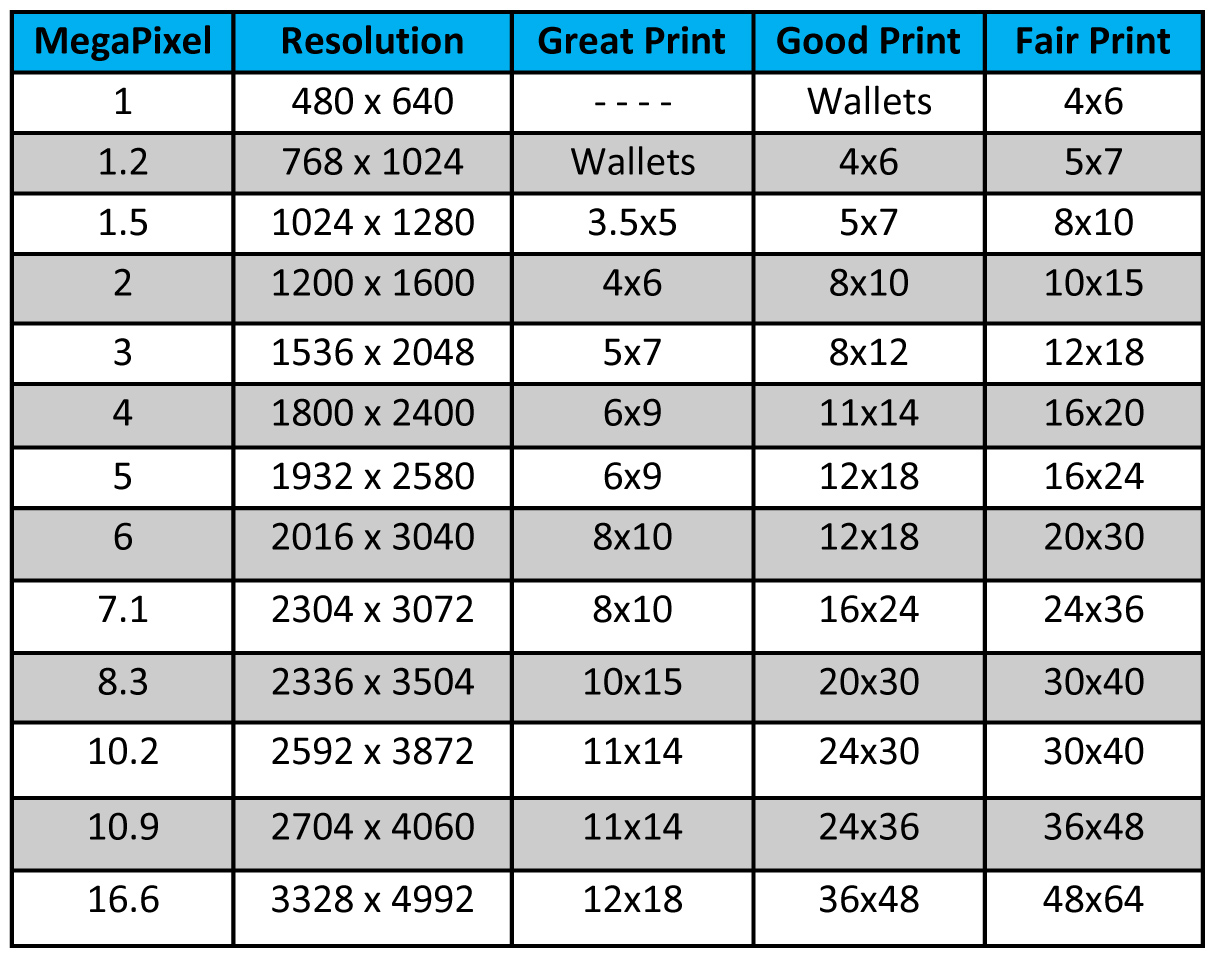

W = 4928 pixels H = 3264 pixels BitDepth = 24 bits/pixel

(W x H x BitDepth) / 8 bits/byte = (W x H x BitDepth) x 1 byte/8bitsĪs an example let’s say the image has the following dimensions: To get the size of the image the resolution will be needed. Image resolution is just the size of the images width(W) and height(H) measured in number of pixels. So a bit depth of 24 bits represents 16.7 million tonal representation of color. Each color has a varying level determined by exponential values from 256 colors for 8 bit and 16,777,216 colors for 24 bit images. The > the bit depth, the > the number of tones (grayscale or color) that can be represented.ĭigital images may be produced in black and white (bitonal), grayscale or color. To determine bit depth you need the number of bits used to define each pixel. This is also referred to as the bit depth of an image. For colored images it uses a certain color scheme called RGB (Red, Green, Blue) represented as 1 byte each or 24 bits (3 bytes) per pixel. A pixel contains 8 bits (1 byte) if it is in BW (black and white). Images are made of a grid of pixels aka “picture elements”. There is another thing that determines the file size and it is called the bit depth. Even if the images shot in RAW are all the same resolution, they will still not have the same file size across all the images captured, but will be close. Some images will have more detail than others depending on your camera settings. This is due to the many differences in detail stored in an image that is determined by lighting, exposure and shutter speed. The file size is not the same as resolution, though resolution does help determine quality and overall file size.įile size is measured in bytes, typically with today’s cameras images captured are stored in files measured in MB (Megabytes). It is also the best format to use for making adjustments to an image before final post processing, yet not all images captured are the exact same file size. For best results typically shoot in RAW, a lossless uncompressed file format which preserves all the details captured. The Relationship of Image Resolution To Image SizeĪn image captured on a digital CMOS sensor camera is saved to a storage media (SD/SDXC card) in a file format.


 0 kommentar(er)
0 kommentar(er)
